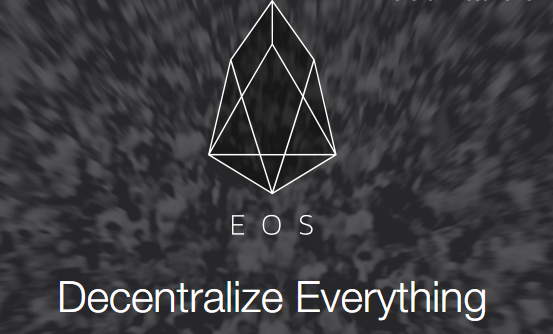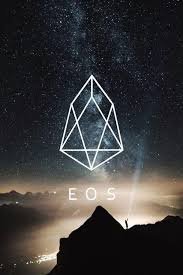
Why should I buy EOS?
EOS tokens have shot up from $7 to as much as $21 in the past few weeks as the market tries to value how popular EOS will be after launching. If software developers go totally mad for it, the price should rise further. If not, it could collapse.
My guess is the former. Early versions of the EOS platform pre-launched in what we call Beta testing have been seriously exciting. It’s super fast, can cope with huge volumes of transactions, and is really easy to write code for. For techies out there, it uses the language called C++ for coding, which is really common among developers. Ethereum, by contrast, uses a specific, newly-created language called Solidity.
There’s another reason I reckon the price of EOS will rise.
Remember how I was saying the value would depend on how many people spend it to use EOS-based apps? Well, EOS’s founders (a software company called Block.one) have given hundreds of millions of dollars from the funds raised during the ICO to venture capital funds investing in app start-ups. One condition: only apps using the Eos infrastructure can apply for funding. EOS VC funding currently totals $1.4 billion.
If that doesn’t encourage more people to launch start-ups, I don’t know what will.
There are literally thousands of developers working on blockchain based apps that do away with the middlemen of this world. Who knows, one of those on the EOS system could be the app that kills off the need for multi-billion dollar companies like Twitter, or Facebook, or even Barclays?
See why a share-the-love kind of guy like me is a fan?
For those just looking to turn a profit from speculating on the currency, you have to be aware EOS is extremely volatile, just like all cryptos. As recently as March, it was only $4. I’ve been slowly buying more since it was $1 and made myself some of the biggest returns I’ve ever had. It’s now my biggest crypto position in my portfolio.
But there’s no guarantee it won’t collapse. There are many risks to consider.

The Risks of buying EOS
The software might prove to be a disappointment (unlikely as we’ve already seen plenty of it in beta test-runs).
It might be overtaken by better innovations elsewhere. Etherium is developing great new technology for its platform to scale up, while IOTA and Cardano offer their own visions of the future and are both hot on the heels of EOS.
You can’t completely eliminate the fact that it might face attack from hackers, regulators or even rival projects.
If you’re thinking of speculating on EOS, then, those are the questions you must ask yourself.
For me, though, I’m all in – as a speculator and an enthusiast.
What’s so special about EOS?
You see, EOS wants to open its technology and ownership to anyone and everyone who’s interested.
It’s a cryptocurrency which is opening up the blockchain system behind it to any software developer wanting to build apps on it. You could think of it like Google allowing anyone and everyone to write apps for Android. Just as Google is now profiting from the ubiquity of Android on billions of people’s phones, so EOS wants to become the platform of choice for the new breed of apps, decentralised ones.
Why? Because in order to do anything on the EOS blockchain, you must first own a bit of EOS, and you own it through EOS tokens.
I'll give you an example. Imagine Uber: it is extremely popular for a handful of reasons, the rides are cheaper than traditional taxis, the passengers and drivers are incentivised to be polite and amicable, the app is intuitive and easy to use.
But if I were to build an Uber on a blockchain like EOS’s, I could easily improve it. First off, because blockchain directly connects both sides of the transaction – driver and passenger – you can remove the company in the middle that’s taking a cut. That saves money for everybody. Fees would be priced in the local currency, but be paid with the “Uber” token.
As my app became more popular, the “Uber” token passengers would use for it would rise in value, so stakeholders are incentivised to develop it further and improve the service.
The payments could be instant, direct into the driver’s account. No fee to a middleman company, and no minimum requirements on payment amounts since there are no banks taking a cut either.
In the same way that the token for this app would rise in value as its popularity grows, so too would the value of EOS, whose blockchain powers the system behind the scenes. My investors, my customers’ drivers, and their passengers have aligned incentives to grow their network. Every time someone uses the token the economy grows, and since EOS is powering all transactions and computation, that too will grow.
The EOS Coin Offering (ICO)
For me to build this theoretical Uber alternative app, the guys behind EOS (a software company called Block.one) had to first create the infrastructure and tools for me to build it with, which they fund through what’s known as an Initial Coin Offering. An ICO is where a project sells tokens in its currency to raise funds for development. It works like a stock market flotation, and what you do is this:
Step one: announce how great your tech is. Drum up interest among investors and programmers
Step two: announce you’re going to raise x million dollars by issuing a limited number of tokens.
Step three: put the tokens on the market and watch the money roll in
That process is fine, but while it may raise the money you want, it usually means that, if your crypto is any good, a group of maybe 20 very rich guys end up getting half of the coins. It’s complicated to explain how, but basically you can pay a fat fee to push to the front of the queue, ahead of ordinary investors.
EOS didn’t want that. Quite the opposite; because they want to maximise the popularity of their platform, they wanted as many people as possible to own their tokens.
Instead of putting them all on the market at once to be gobbled up by a few wealthy folks in a matter of minutes, the EOS folks have staggered their offering of 1 billion coins over a whole year, selling chunks of 2 million tokens a day, every day. Everyone who applies gets a percentage of that day’s issue according to how much they can afford. Like most cryptocurrencies, the tokens can be split into fractions like the old ha’penny piece, meaning there’s no high minimum entry level. You could buy $1 of EOS if you wanted to.
All that has served as a disincentive to rich investors hoping to corner the market, and meant far more ordinary people have got in on the action.
Hundreds of thousands of different people now own a piece of EOS. That’s very cool. It makes EOS the John Lewis of cryptos. Or even better; the crypto Co-op, more widely held than over 99% of other cryptos, rivaling the likes of Bitcoin, Monero, Litecoin and Ethereum.
The thing is, the auction is finally coming to an end on 1 June. On the same day, the infrastructure will go live, so all those apps being developed by people like me (more about my EOS apps in future columns) will also begin launching, using EOS for transactions and data transfers.
That means there will be no more supply of EOS (apart from perhaps 1-4% inflation per year if the EOS community agrees to it) but potentially lots of demand. The question is: how much demand, and how much will the market price that demand at?
Congratulations @idrispatel! You have completed some achievement on Steemit and have been rewarded with new badge(s) :
Click on any badge to view your own Board of Honor on SteemitBoard.
To support your work, I also upvoted your post!
For more information about SteemitBoard, click here
If you no longer want to receive notifications, reply to this comment with the word
STOPCongratulations @idrispatel! You received a personal award!
Click here to view your Board
Congratulations @idrispatel! You received a personal award!
You can view your badges on your Steem Board and compare to others on the Steem Ranking
Vote for @Steemitboard as a witness to get one more award and increased upvotes!